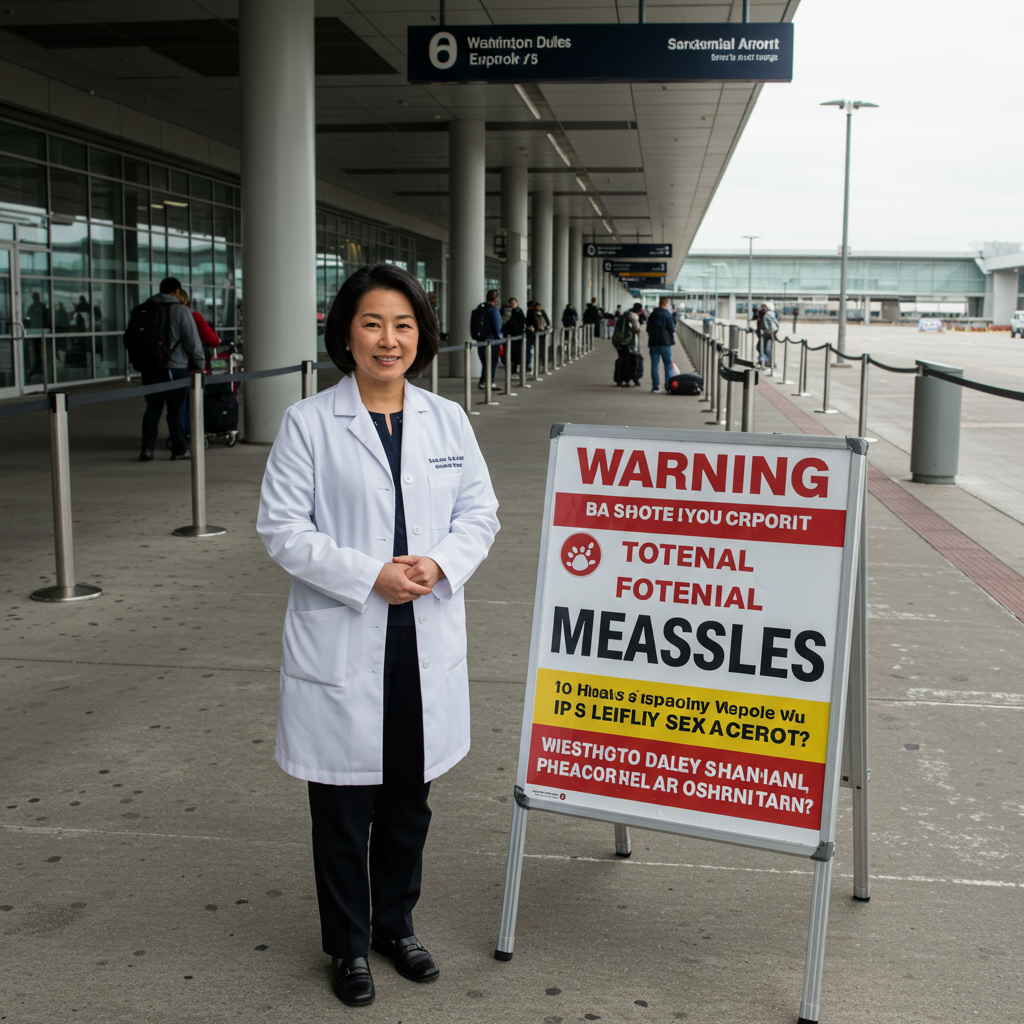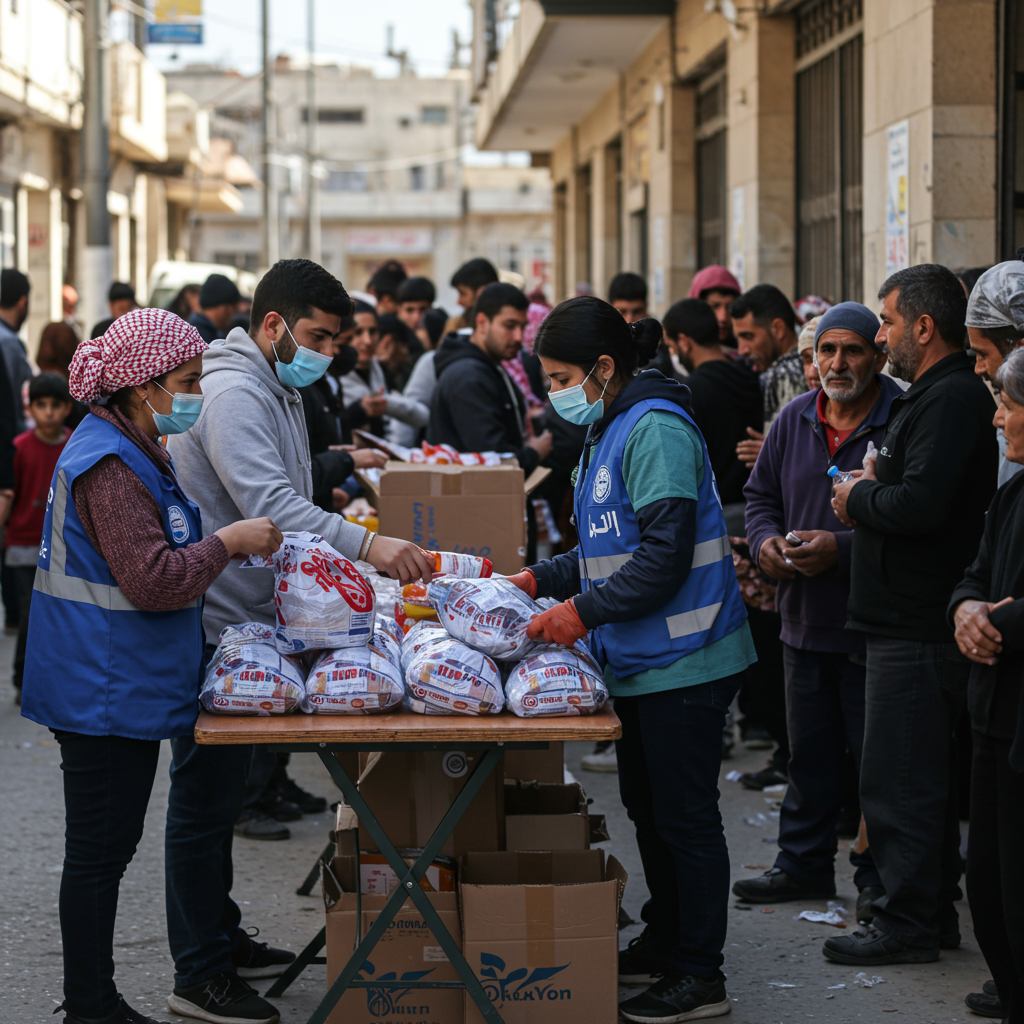Health officials in the Washington D.C. region are alerting the public following confirmed measles cases linked to travelers arriving at Washington Dulles International Airport (IAD). These warnings highlight potential exposure risks at the airport and several locations throughout the metropolitan area.
This latest alert centers around a traveler diagnosed with measles who was infectious while moving through the D.C. area last week. Health departments are actively tracing potential contacts to contain the spread of this highly contagious illness.
Potential Exposure Sites and Times
Individuals who were at specific locations during the following times may have been exposed:
Washington Dulles International Airport (IAD): On June 8th, between 10:30 a.m. and 1:00 p.m., including Concourse A, transportation to the International Arrivals Building (IAB), and the baggage claim area.
Metrorail Silver Line: On June 8th, from 11:30 a.m. to 2:30 p.m., specifically the route from the Dulles Airport station with a transfer at Metro Center onto the Red Line heading towards Shady Grove.
The Russian School of Mathematics (8401 Connecticut Ave., Chevy Chase, Maryland): On June 8th, from 3:00 p.m. to 6:00 p.m.
Metrobus L8 Route: On June 8th, from 5:00 p.m. to 7:00 p.m., southbound to Friendship Heights.
Metrobus H4 Route: On June 12th, from 7:30 a.m. to 9:30 a.m., westbound to Tenleytown.
Medstar Health Pediatrics (4200 Wisconsin Ave. NW, Tenleytown): On June 12th, from 8:00 a.m. to 2:30 p.m.
It’s also important to note that another measles case linked to international travel through Dulles Airport resulted in a separate exposure warning earlier this year, including potential exposures at Dulles on March 5th between 4:00 p.m. and 9:00 p.m. and at Johns Hopkins Howard County Medical Center Pediatric Emergency Department on March 7th. These instances underscore the risk associated with international travel during the current global increase in measles activity.
Understanding Measles: Symptoms and Risks
Measles is considered one of the world’s most contagious diseases, spreading easily through the air when an infected person coughs, sneezes, or breathes. The virus can remain infectious in the air and on surfaces for several hours.
Symptoms typically appear 7 to 21 days after exposure and often include:
High fever (over 101°F)
Runny nose
Cough
Red, watery eyes
Tiny white spots inside the mouth (Koplik spots)
A characteristic red rash that starts on the face and spreads down the body, appearing 3 to 5 days after initial symptoms.
Individuals are contagious from about four days before the rash appears until four days after it starts. While often considered a childhood illness, measles can lead to serious complications in anyone, including pneumonia, encephalitis (brain swelling), and even death. Those at highest risk for severe outcomes are infants younger than one year old, pregnant women, and people with weakened immune systems. Tragically, recent measles cases in the U.S. have resulted in fatalities, including in Texas and New Mexico.
The Critical Role of Vaccination
Vaccination is the most effective protection against measles. The Measles, Mumps, Rubella (MMR) vaccine is highly effective, providing protection in approximately 97% of cases after two doses. The recommended schedule is one dose at 12-15 months of age and a second dose at 4-6 years. An early dose is advised for babies 6-11 months old traveling internationally. Adults should also confirm their immunity, which is generally assumed for those born before 1957.
Measles was declared eliminated in the United States in 2000 thanks to high vaccination rates. However, the current resurgence, with over 1,100 cases reported across many states this year (the highest level since 2019), is largely attributed to declining vaccination rates. Experts warn that falling below the 95% herd immunity threshold necessary to prevent widespread transmission puts communities at risk, potentially allowing measles to become common again.
What to Do If You May Have Been Exposed
Health officials strongly urge anyone who was at the identified locations during the specified times and who is not immune to measles (through vaccination, prior infection, or birth before 1957) to take immediate action:
- Monitor for Symptoms: Watch for signs of measles for 21 days following the potential exposure date.
- Contact Your Doctor (by phone): If you develop a fever or rash, call your healthcare provider immediately before visiting their office or an emergency room. This allows them to take precautions to prevent exposing others.
- Avoid Public Places: If symptomatic, stay home and avoid contact with others, especially vulnerable individuals, until cleared by a health professional.
- Verify Vaccination Status: Ensure you and your family are up-to-date on the MMR vaccine.
These warnings serve as a crucial reminder of measles’s contagious nature and the importance of vaccination, particularly for travelers and in interconnected communities served by transportation hubs like Dulles Airport.




